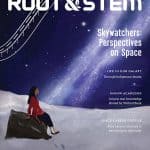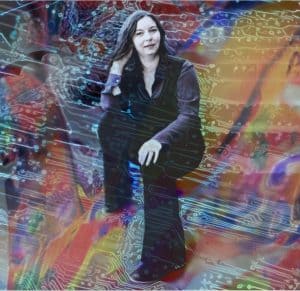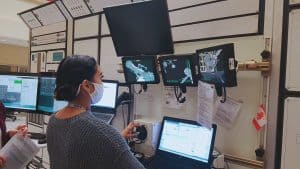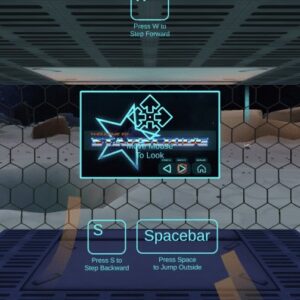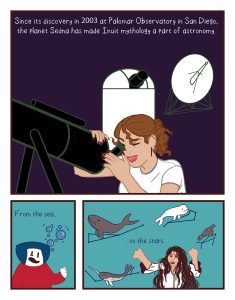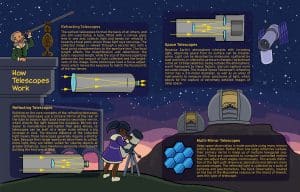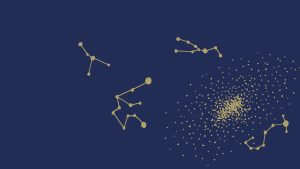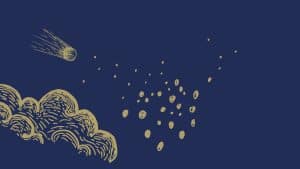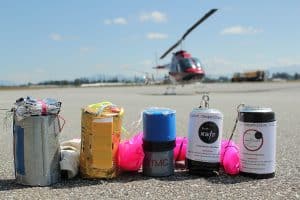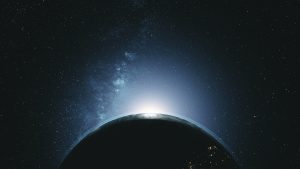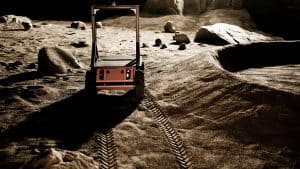This issue of Root & STEM explores the sky and stars above us and the scientific perspectives behind space exploration. From thinking about life in our galaxy with an Indigenous lens to exploring the different perspectives of the sky and stellar knowledge, this issue asks students to understand their connection to the universe and how it can impact human life.
Guest Editorial
Looking at the starry night sky is something that connects each of us with the wonders of the universe. Our knowledge of the sky is kept alive through stories—some of them written in the stars— and helps us remember special moments, while teaching us about essential relationships between our environment, our land, and the place we hold in the cosmos.
From the summit of MaunaKea, the tallest volcano on the island of Hawai’i, large telescopes allow us to look deep into the universe and observe close-by galaxies, which contain billions of stars, in great detail. As an astronomer, I keep a close eye on the data collected by the telescope each night. I am from Canada, and I am a member of the Pekuakamuilnuatsh First Nation. I moved to Hawaii five years ago to work at the Canada-France-Hawaii Telescope, where scientists and students from around the world can use the facility to look at celestial objects, from asteroids and planets to galaxies and black holes. When I observe the sky, I know I am where I should be. I have always been curious, and trying to understand our universe is the ultimate sense of curiosity.
I study the birth of stars. Stars form in the interstellar clouds of galaxies when the force of gravity pulls all the atoms together, and eventually, a celestial object in the center becomes bigger and bigger. At a certain point, something very special happens. Gravity becomes so strong that nuclear reaction ignites the heart of the object; elements start to fuse, creating larger ones. All of this generates a lot of light: A star is born.
Leading a group of 70 researchers, I developed a science program called SIGNALS, the Star formation, Ionized Gas, and Nebular Abundances Legacy Survey; a large survey of star-forming regions, where newly born stars are found. During the past four years, I used a special astronomical instrument called SITELLE to look at 40 galaxies near the Milky Way. Within these galaxies, we detected more than 50,000 regions that are actively fabricating stars. A star continuously affects its environment by producing and returning new elements to the interstellar clouds, just like humans continuously affect their environment on Earth! But for the stars, these new elements are recycled to form new stars. It does transform the generations of stars to come! Knowing how this process occurs is going to help us increase our understanding of the past, as well as the future of stars in our universe.
My goal is to make SIGNALS the largest database of information on star formation ever built. For the first time, scientists will have enough information on all the locations where stars form, as well as the kind of stars that emerge from the clouds. Each star has its own story. By listening to thousands of them, we will have a global picture of their role in the universe.
In this issue of Root & STEM, you’ll find articles and resources that will inspire students to explore the sky above us. Whether it’s thinking about life in our galaxy through an Indigenous lens or considering the unique perspectives of the stars and planets that arise in different cultures, this issue asks students to understand their connection to the sky above us and how it can impact human life.
– Laurie Rousseau-Nepton

Podcasts
Featured Content
Below is a collection of stories, activities, comics, and lesson plans featured in the fifth issue of Root & STEM.
